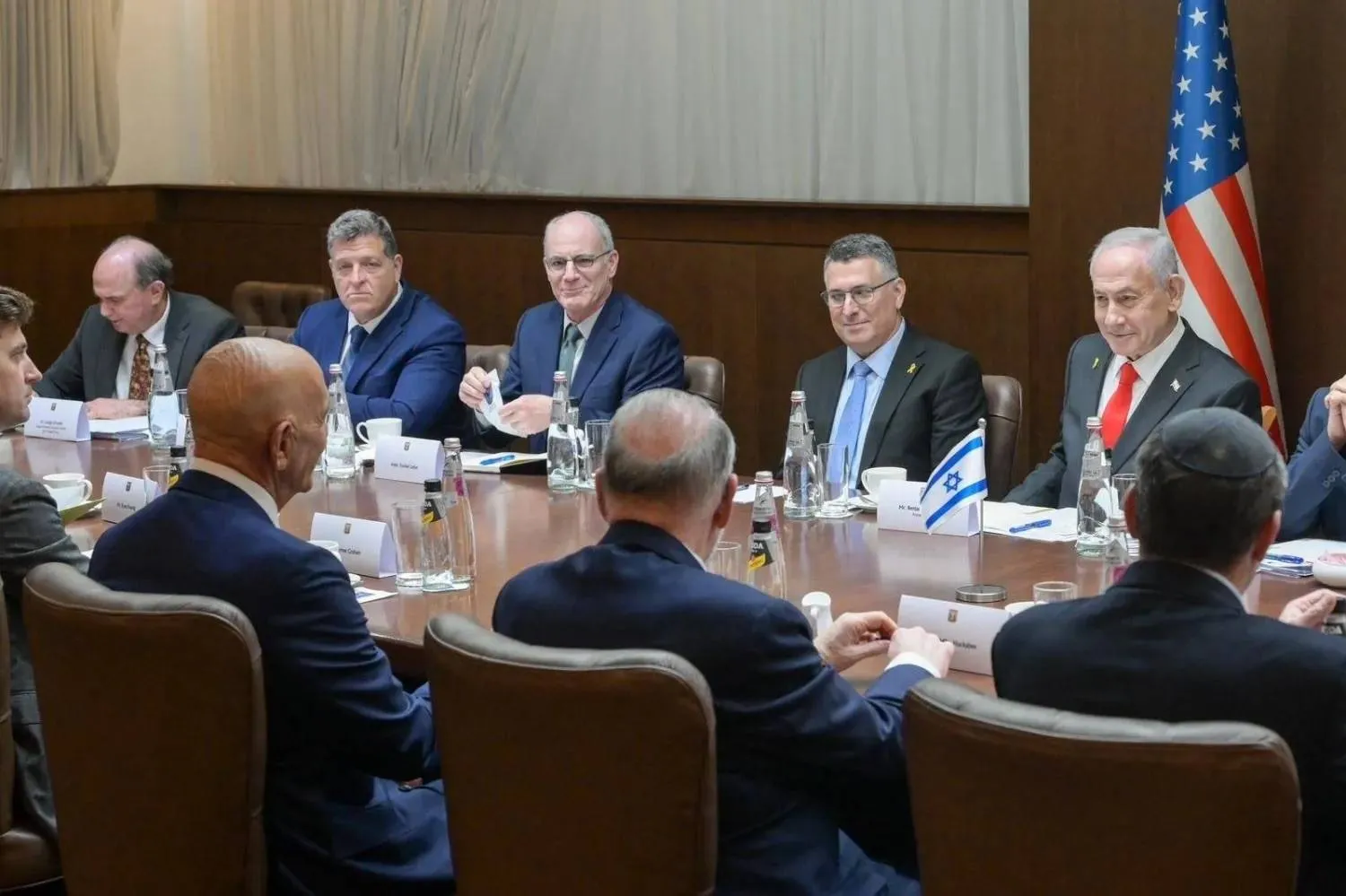Hebrew-language media reported that Israeli Prime Minister Benjamin Netanyahu met on Monday in Jerusalem with US envoy Tom Barrack, amid what were described as unusually blunt private messages from the administration of President Donald Trump ahead of a planned US–Israel summit later this month in Florida.
According to the reports, the talks focused on three files: Gaza, Syria and Netanyahu’s expected meeting with Trump.
On Gaza, Israeli daily Yedioth Ahronoth said Barrack sought to allay Netanyahu’s concerns about a Turkish role in any international force deployed to the enclave during a prospective second phase of a fragile ceasefire that began in October. Barrack, the paper reported, argued that Türkiye has the greatest leverage over Hamas and is best placed to persuade the group to disarm.
The newspaper said Barrack reminded Netanyahu that Ankara had endorsed the Trump administration’s ceasefire framework for Gaza and had pledged, on Hamas’s behalf, to provisions related to weapons handover. He reportedly said that Turkish participation would also encourage other hesitant countries to join an international force.
According to Yedioth Ahronoth, Barrack warned that excluding Türkiye would cause those states to step back, adding that Trump would not allow the initiative to fail. Netanyahu’s public statements questioning whether Hamas would ever relinquish its weapons — and his assertion that only Israel could enforce that outcome — were described by Barrack as “unacceptable” and as jeopardizing the plan.
Israel’s Channel 12 also reported that the White House delivered a “private and sharp” message to Netanyahu, asserting that the killing of a senior Hamas military figure, Raed Saad, constituted a breach of the ceasefire brokered with Trump’s mediation.
The channel cited growing tension between the Trump administration and Netanyahu’s government over moving to the deal’s second phase and over Israel’s broader regional policies.
Two US officials were quoted as saying that Secretary of State Marco Rubio, White House envoy Steve Witkoff, and Jared Kushner, the president’s son-in-law, were “deeply frustrated” with Netanyahu’s conduct.
One senior US official was quoted as telling Israeli media that the message to Netanyahu was explicit: if he chose to damage his own credibility, that was his decision, “but we will not allow you to damage President Trump’s reputation after he mediated the Gaza agreement.”
US officials were also cited as expressing rising concern over settler violence against Palestinians in the West Bank and what they termed Israeli “provocations” that undermine Washington’s efforts to expand the Abraham Accords. The United States, one official said, was not asking Israel to compromise its security, but to avoid steps perceived in the Arab world as inflammatory.
On Syria, Israeli assessments quoted in the press said Barrack outlined US “red lines,” stressing Trump’s desire to see stability there and warning that frequent Israeli operations could risk destabilizing the country. Reports added that Washington favors reaching a security understanding and wants to avoid actions it views as undermining the Syrian leadership.
Regarding Lebanon, Trump was said to support continued pressure on Hezbollah through limited operations, while opposing a broader escalation.
Despite recent criticism by Netanyahu of Barrack — including remarks questioning his impartiality — the envoy’s visit went ahead. Columnist Nahum Barnea wrote in Yedioth Ahronoth that US officials increasingly believe Netanyahu is not serious about advancing Trump’s peace plan and is intent on prolonging the war, language he said has sparked intense anger inside the White House.
Israeli analysts suggested Netanyahu is unlikely to reject all US requests outright, instead seeking partial accommodation to ensure a successful meeting with Trump on December 29. Yet, in a show of independence, Israeli forces reportedly carried out an airstrike in Syria shortly before Barrack arrived.
Netanyahu also announced a trilateral summit with Greece and Cyprus, a move widely interpreted in Israel as a political signal directed at Türkiye.
At the close of the meeting, Barrack was quoted as saying the talks were a “constructive dialogue aimed at achieving regional peace and stability.”









